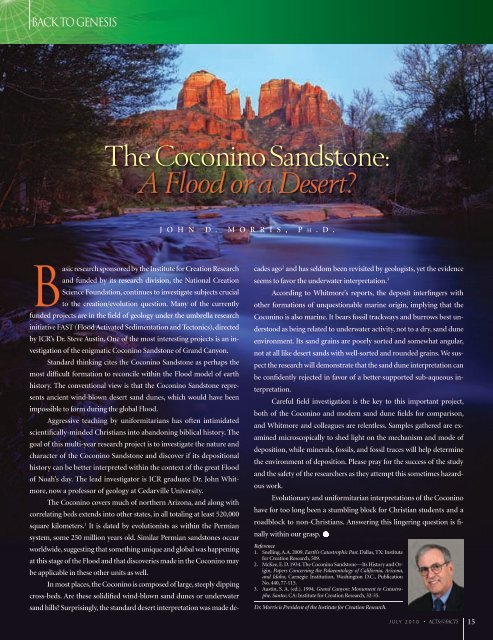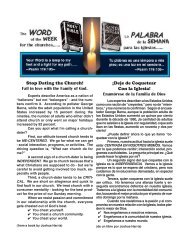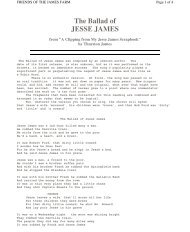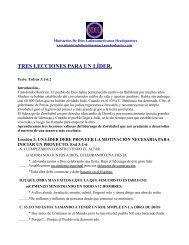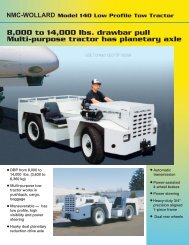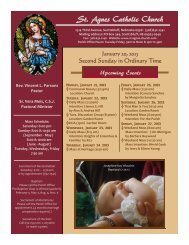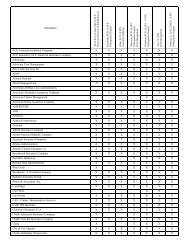icr graduates — a cause for celebration
icr graduates — a cause for celebration
icr graduates — a cause for celebration
Create successful ePaper yourself
Turn your PDF publications into a flip-book with our unique Google optimized e-Paper software.
BACK TO GENESIS<br />
The Coconino Sandstone:<br />
A Flood or a Desert?<br />
Basic research sponsored by the institute <strong>for</strong> Creation Research<br />
and funded by its research division, the National Creation<br />
science Foundation, continues to investigate subjects crucial<br />
to the creation/evolution question. Many of the currently<br />
funded projects are in the field of geology under the umbrella research<br />
initiative FAst (Flood Activated sedimentation and tectonics), directed<br />
by iCR’s Dr. steve Austin. one of the most interesting projects is an investigation<br />
of the enigmatic Coconino sandstone of Grand Canyon.<br />
standard thinking cites the Coconino sandstone as perhaps the<br />
most difficult <strong>for</strong>mation to reconcile within the Flood model of earth<br />
history. the conventional view is that the Coconino sandstone represents<br />
ancient wind-blown desert sand dunes, which would have been<br />
impossible to <strong>for</strong>m during the global Flood.<br />
Aggressive teaching by uni<strong>for</strong>mitarians has often intimidated<br />
scientifically-minded Christians into abandoning biblical history. the<br />
goal of this multi-year research project is to investigate the nature and<br />
character of the Coconino sandstone and discover if its depositional<br />
history can be better interpreted within the context of the great Flood<br />
of Noah’s day. the lead investigator is iCR graduate Dr. John Whitmore,<br />
now a professor of geology at Cedarville university.<br />
the Coconino covers much of northern Arizona, and along with<br />
correlating beds extends into other states, in all totaling at least 520,000<br />
square kilometers. 1 it is dated by evolutionists as within the Permian<br />
system, some 250 million years old. similar Permian sandstones occur<br />
worldwide, suggesting that something unique and global was happening<br />
at this stage of the Flood and that discoveries made in the Coconino may<br />
be applicable in these other units as well.<br />
in most places, the Coconino is composed of large, steeply dipping<br />
cross-beds. Are these solidified wind-blown sand dunes or underwater<br />
sand hills? surprisingly, the standard desert interpretation was made de-<br />
J o h N D . M o R R i s , P h . D .<br />
cades ago 2 and has seldom been revisited by geologists, yet the evidence<br />
seems to favor the underwater interpretation. 3<br />
According to Whitmore’s reports, the deposit interfingers with<br />
other <strong>for</strong>mations of unquestionable marine origin, implying that the<br />
Coconino is also marine. it bears fossil trackways and burrows best understood<br />
as being related to underwater activity, not to a dry, sand dune<br />
environment. its sand grains are poorly sorted and somewhat angular,<br />
not at all like desert sands with well-sorted and rounded grains. We suspect<br />
the research will demonstrate that the sand dune interpretation can<br />
be confidently rejected in favor of a better-supported sub-aqueous interpretation.<br />
Careful field investigation is the key to this important project,<br />
both of the Coconino and modern sand dune fields <strong>for</strong> comparison,<br />
and Whitmore and colleagues are relentless. samples gathered are examined<br />
m<strong>icr</strong>oscopically to shed light on the mechanism and mode of<br />
deposition, while minerals, fossils, and fossil traces will help determine<br />
the environment of deposition. Please pray <strong>for</strong> the success of the study<br />
and the safety of the researchers as they attempt this sometimes hazardous<br />
work.<br />
Evolutionary and uni<strong>for</strong>mitarian interpretations of the Coconino<br />
have <strong>for</strong> too long been a stumbling block <strong>for</strong> Christian students and a<br />
roadblock to non-Christians. Answering this lingering question is finally<br />
within our grasp.<br />
Reference<br />
1. snelling, A.A. 2009. Earth’s Catastrophic Past. Dallas, tX: institute<br />
<strong>for</strong> Creation Research, 509.<br />
2. McKee, E. D. 1934. the Coconino sandstone<strong>—</strong>its history and origin.<br />
Papers Concerning the Palaeontology of Cali<strong>for</strong>nia, Arizona,<br />
and Idaho, Carnegie institution, Washington D.C., Publication<br />
No. 440, 77-115.<br />
3. Austin, s. A. (ed.). 1994. Grand Canyon: Monument to Catastrophe.<br />
Santee, CA: institute <strong>for</strong> Creation Research, 32-35.<br />
Dr. Morris is President of the Institute <strong>for</strong> Creation Research.<br />
JULY 2010 • ACTS&FACTS<br />
15


